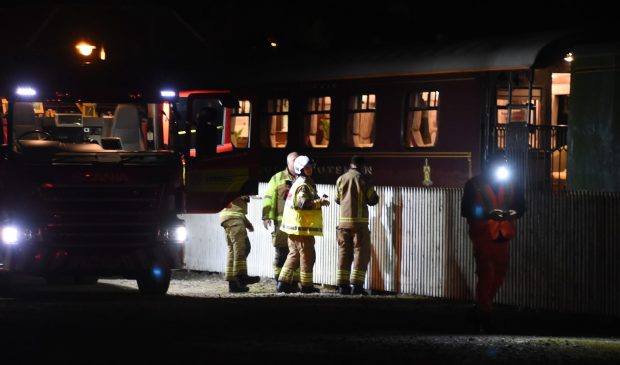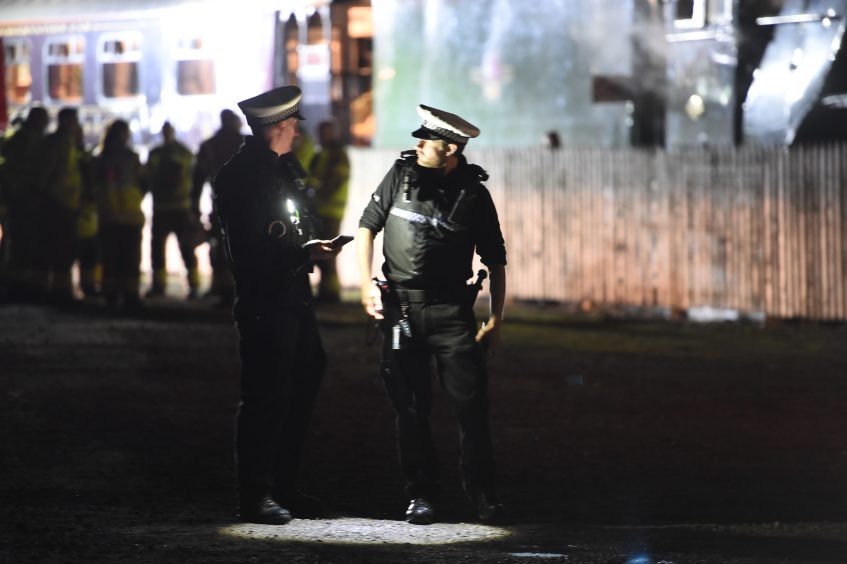The rail ombudsman has ruled that a train collision in Aviemore last September happened because the driver did not control the speed of the Flying Scotsman.
The slow-speed collision happened when the Flying Scotsman was travelling at 7mph on platform three at Aviemore Station on the Strathspey Railway.
The Strathspey Railway Company has been ordered by the Rail Accident Investigation Branch (RAIB) to undertake a review in light of the report.
Two people were taken to hospital following the collision.
The incident also caused minor damage to the locomotive tender and damage to the coaches involved, which were taken out of service.
Driver was operating a planned movement
In a report published today, the RAIB said: ” At 6.05pm on Friday 29 September 2023, the steam locomotive Flying Scotsman, travelling tender first, collided with the Royal Scotsman coaches on the approach to platform three at Aviemore station on the Strathspey Railway, Badenoch and Strathspey.
“These coaches, which normally operate on the mainline railway, were due to be hauled on the Strathspey Railway by Flying Scotsman as part of a planned movement to Boat of Garten station.
“The collision occurred at 7 mph (11 km/h) during a move in preparation for the coupling of the locomotive to the coaches.
“Two people in the coaches were taken to hospital as a consequence of the accident. The collision also caused minor damage to the locomotive tender and damage to the coaches involved, which were taken out of service.”
Details of Aviemore collision
Investigators said: “The collision occurred because the driver was not aware of the proximity of the locomotive to the coaches and so did not control its speed accordingly.
“This was due to the driver’s view of the track ahead being limited and because, immediately before the collision, no one in the cab warned the driver that the locomotive was approaching the coaches.
“The driver’s expectation, based on previous experience, was that the coaches would be located further away from the approaching locomotive.”
However, the Strathspey Railway Company’s ineffective management of the visit of the locomotive to the railway was identified as an underlying factor.
Strathspey Railway Company told to undertake a review
The RAIB made one recommendation.
- It is addressed to the Strathspey Railway Company and relates to a review of the arrangements for foreseeable abnormal operations, such as visiting railway vehicles and special events, to ensure that the risks are identified, assessed and mitigated.
The RAIB also issued two reminders
- The first outlines the importance of train crew maintaining an effective lookout while driving on a line-of-sight basis and knowing who is responsible for maintaining that lookout.
- The second is the importance of complying with rules regarding the number of people in a locomotive cab and ensuring that roles during movements are clearly understood.
Here’s how we reported the incident at the time:
The Flying Scotsman to return to Aberdeen for special centenary event next month



Conversation